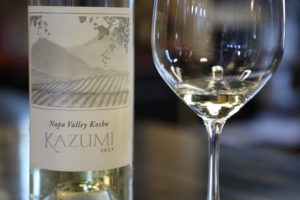
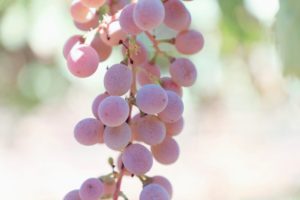 Kazumi Wines was founded by Michelle Sakazaki with her first vintage from 2015. The name Kazumi honors her Japanese heritage, with 和(kazu) meaning harmony and 美(mi) referring to beauty. The inception of Kazumi is rooted in friendship, timing and being in the right place at the right time. Michelle is good friends with growers, the Perret family, the founders of what was Domaine Napa and formerly owners of the property that is now home to Alpha Omega Winery. When they offered to sell her 1/2 ton of their Sauvignon Blanc from their vineyard in Rutherford, she accepted. Michelle setup a crowd founding project for her tiny production and before the wine was bottled, it was already pre-sold. This was during harvest; she remembers scrambling to logistically arrange everything related to producing wine from this 1/2 ton of grapes.
Kazumi Wines was founded by Michelle Sakazaki with her first vintage from 2015. The name Kazumi honors her Japanese heritage, with 和(kazu) meaning harmony and 美(mi) referring to beauty. The inception of Kazumi is rooted in friendship, timing and being in the right place at the right time. Michelle is good friends with growers, the Perret family, the founders of what was Domaine Napa and formerly owners of the property that is now home to Alpha Omega Winery. When they offered to sell her 1/2 ton of their Sauvignon Blanc from their vineyard in Rutherford, she accepted. Michelle setup a crowd founding project for her tiny production and before the wine was bottled, it was already pre-sold. This was during harvest; she remembers scrambling to logistically arrange everything related to producing wine from this 1/2 ton of grapes.
Post harvest she remembers thinking, “this wine making thing is not too difficult”. So in 2016 she doubled her production to 1 ton, this year to Cabernet Sauvignon and asked winemaker Kale Anderson to oversee the production. Both she and Kale are graduates from UC Davis and had previously met through the 90 Plus Wine Club her father had started (more about that below). It was perfect timing, as Kale had just began his wine consulting business.
Koshu
In 2018 Michelle and Kale were told by Tokuro Onisaki (used to work and live in Napa Valley) that the Foundation Plant Sciences (FPS) at the University of California Davis was growing a Japanese variety called Koshu. They were able to secure Koshu plant material from FPS in 2019. Michelle’s father Jack Sakazaki became excited when he learned there were Koshu grapes already growing in the U.S. Michelle calls him the world’s best sales person for this variety; he convinced several growers to plant Koshu prior to it even being approved for commercial use. Michelle, her father and Kale are partners in their Koshu project, which is bottled under Kazumi Wines.
The first Koshu vines in Napa Valley were planted in 2019 including less than an acre at the Laird family owned Sunrise Ranch in Jamieson Canyon, a cooler part of Napa Valley located south east of the city of Napa and also half and acre in Oak Knoll. In 2020 they planted another 2 acres and in 2021 another 3 acres, all at Sunrise Ranch. Through a partnership with LangeTwins Winery and Vineyards in Lodi, in 2024 they planted 3 more acres of Koshu.
The first commercial vintage of Kasumi Koshu was only 50 cases from the 2021 vintage; this was also the first ever vintage of Koshu grown, produced and bottled commercially in the U.S. In part due to these being the first grapes produced by the vines, this bottling was very much acid driven and sported an alcohol of only around 11%. In 2022 they bottled 120 cases, a richer and riper expression. And in 2023 production was 341 cases.
All the Koshu they have planted to date has been of one clone. Michelle had to register Koshu as a new variety with the TTB as there had never been a commercial bottling from this variety in the U.S. prior. Not yet approved in time for the 2021 bottling, this wine was labeled as a white wine.
In 2023 Kazumi produced their first ever Koshu sparkling wine using the methode traditional. It was crafted to be a brut style and dry.
We were first introduced to Koshu while wine tasting in Japan’s Yamanashi region at several wineries including Chateau Mercien and Grace Vineyards. The name Koshu is the former name for Yamanashi. It is a hardy grape that does well in heat, even the extreme heat spike that Napa Valley experienced around Labor Day weekend in 2022; it is vigorous and grows a sizable canopy with large distinctive leaves. And it doesn’t need too much water. And Koshu features loose berry clusters with thick-skinned grapes. Kazumi may experiment with dry farming certain blocks as the vines mature.
Refreshingly its sugar levels are kept in check, even when ripe and the grapes always carry a bright natural acidity. In Napa Valley it goes through veraison later than other white varieties, with clusters taking quite some time to reach their full size, turning a beautiful pink color when completely ripe. And it ripens late, closer to when red varieties are harvested in Napa Valley; Kazumi generally harvests Koshu in mid October for still wines and in mid September for sparkling wine.
90 Plus Wine Club
Founder of the 90 Plus Wine Club, Jack Sakazaki built an influential career in sports marketing in Japan for several decades including as Chairman of Japan Sports Marketing. Some of his contributions included creating the inaugural Professional China Baseball League in 2003 and running the LPGA Fields Open in Hawaii from 2006 until 2009.
He visited Napa Valley for the first time while he was a student at the University of California at Berkeley in the mid 1960s. In 1988 he visited the golf course at Silverado Country Club in search of a course to host a golf event. He fell in love again with the valley, so much so that in 1996 he purchased a home in Silverado Springs, while still living in Japan. He became a member at Silverado Country Club and permanently ‘retired’ to Napa Valley in 2008. But after about 6 months he realized he needed to do more with his time than golf.
Some of his golfing friends owned wineries in Napa Valley. Other friends would often ask him to purchase Napa wines and send them to their addresses in Japan. This led them to think about creating a business to facilitate introducing clients in Japan to premium wines from Napa Valley, focusing on wines which were rated at least 90 points by critics.
They didn’t want to be just another distributor in Japan, so with Jack’s neighbor in Napa, George Porter, they decided to create a wine club, focused on selling wines to the Japanese market. They began introducing themselves to wineries in Napa Valley; after 6 months of this and overseeing logistics, Jack realized they needed help. So he called his daughter Michelle. At the time she was working in the fashion industry at Armani Exchange in New York but was at a point in her career where she was thinking about a career change due to the extremely long hours. Something involving wine or in the culinary world appealed to her.
Her father told her she might need to find a second job as he wasn’t sure he had enough hours for her. As soon as she started working she discovered the opposite was true; she was an integral part of building and managing the business. Today they maintain a wine warehouse in Japan and have clients in Japan, Taiwan and South Korea. Since their inception they have worked with more than 200 wineries.
Starting Kazumi Wines allowed her to explore the other side of the wine business, including production. Through relationships already established in Asia, the Kazumi wines were able to be added into their existing portfolio, offered to current members.
Select Wines

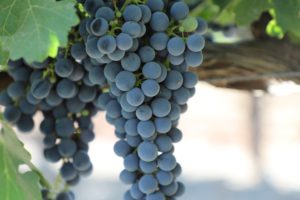 The Kazumi 2023 Koshu Napa Valley includes grapes from the first two blocks planted at Sunrise Ranch plus Oak Knoll grapes; this wine is medium gold in color. The immediately attractive bouquet is highly appealing and diverse, offering scents of pear, apple, kiwi, melon white nectarine, white peach, papaya, mandarin orange and citrus blossom. As it evolves in the glass it opens to spring florals including star jasmine and honeysuckle. On the palate there are flavors of red delicious apple, kiwi, pineapple guava, Bosc pear and pineapple. Bright and minerally, with a light fleshy character, the finish lingers refreshing with a mouth watering acidity. If a wine could speak, this bottling would request fresh seafood, perhaps a papaya glazed shrimp with red pepper vinaigrette. This wine was fermented in 25% new French oak barrels, 33% neutral French oak barrels and 42% stainless steel drums, with its aging in the same vessels for 4 months of which 2 months was on its gross lees with battonage occurring weekly prior to racking and then bottling. The wine did not go through malolactic fermentation; its acidity is all natural; the pH is 3.41 and it is 12% alcohol.
The Kazumi 2023 Koshu Napa Valley includes grapes from the first two blocks planted at Sunrise Ranch plus Oak Knoll grapes; this wine is medium gold in color. The immediately attractive bouquet is highly appealing and diverse, offering scents of pear, apple, kiwi, melon white nectarine, white peach, papaya, mandarin orange and citrus blossom. As it evolves in the glass it opens to spring florals including star jasmine and honeysuckle. On the palate there are flavors of red delicious apple, kiwi, pineapple guava, Bosc pear and pineapple. Bright and minerally, with a light fleshy character, the finish lingers refreshing with a mouth watering acidity. If a wine could speak, this bottling would request fresh seafood, perhaps a papaya glazed shrimp with red pepper vinaigrette. This wine was fermented in 25% new French oak barrels, 33% neutral French oak barrels and 42% stainless steel drums, with its aging in the same vessels for 4 months of which 2 months was on its gross lees with battonage occurring weekly prior to racking and then bottling. The wine did not go through malolactic fermentation; its acidity is all natural; the pH is 3.41 and it is 12% alcohol.
The 2022 Kazumi Sauvignon Blanc is from grapes grown at Whiskey River Ranch in Pope Valley. These grapes were dry farmed for some time because during the drought their water source ran dry. This wine is medium gold in color; the bouquet is sweetly fruited with aromas of honeysuckle, apricot, pineapple and a light note of bruised apple. The texture is rounded, with a light creamy like character but supported by a bright acidity. On the palate there are flavors of pineapple, red delicious apple, pineapple guava, pear, white nectarine, white peaches and pomelo. Lingers bright and long lasting with persistent and rich lasting flavor. This wine straddles the fence between some of its more inherent varietal characteristics (herbal) and attributes expressed from warmer climates. And both Michelle and Kale noticed this wine has developed additional characteristics both on the bouquet and the palate in a relatively short amount of time. We tasted it nearly 2 years post vintage. We would love to pair this with a sesame seed citrus glaze salmon. It was aged for 6 months, sur lie for two of the months in both French oak barrels and stainless steel drums.
The first Kazumi Cabernet Sauvignon was from 2016. Michelle was slated to purchase one ton of grapes but then the deal fell through at the last minute. So her father’s friend Salvador Renteria (Renteria Vineyard Management) offered to sell her a ton of grapes from their family’s leased vineyard in Oakville. Kazumi continues to produce from the same block in this vineyard, which is also where the Renteria’s source from for one of their Tres Perlas wines. Kazumi harvests earlier than other producers who buy grapes from this vineyard. And for the first time ever to mitigate the extreme heat spike during the end of summer 2022, the vines were kept cooler by using over head sprinklers (normally used for frost protection).
The 2022 Kasumi Cabernet Sauvignon Skellenger Vineyard (Oakville) is 100% varietal of clone 4. The grapes were fermented whole berry in oak puncheons and then aged for 18 months in French oak barrels. This wine is deep ruby with an amaranthine rim; the bouquet is both floral and dark fruited with scents of violets, dark plum, cherry, boysenberry accompanied by pipe tobacco, a hint of mocha and milk chocolate. And there is another aromatic layer of red chili spice (but no herbal/greenness). The barrel aging provides complementary secondary aromatics while the focus at this age is on its primary fruit characteristics. For reference we tried this wine 3 months post bottling, prior to release. Zipping across the palate with a lively acidity, if this wine was a dancer it would be on the floor immediately doing salsa. The palate offers red fruited flavors of plum, cherry, currant. It is very youthful as expected, but the tannins are already rounded and integrated into the finish. If you are seeking a food friendly contemporary Napa Valley Cabernet Sauvignon that will pair with a variety of Asian foods, this is an excellent choice. The finish is refreshing and mouth watering with both fruit and tannins paralleling each other for some time before eventually dissipating. This wine is 14% alcohol with a pH of 3.80.
—
The labels for the Kazumi wines are colorful; Jack mentioned that they should create a different label especially for their Koshu bottlings, requesting something elegant looking. Ultimately they agreed on a monochromatic look with shades of silver and grey. The label for the Koshu bottling is very similar to the image used in their branding for the 90 Plus Wine Club. It is minimalist and understated, but stands out in its own way.
Michelle painted the colorful watercolor image of a sunset over Oahu used on the other bottlings of Kazumi. Each label contains the Japanese characters for the word Kazumi. Starting in 2023, the Kazumi wines are bottled without capsules.
The wines are sold both direct to consumer through the website but are also selectively distributed, primarily in New York at both restaurants and retail outlets. Some of the fine-dining establishments which carry Kazumi wines in New York City include Gramercy Tavern, l’abeille, Saito and Blue Ribbon restaurants. The wines are also selectively distributed in Japan. Total production as of our latest update to this review is around 600 cases annually, but growing.
For more information or to purchase wine, visit: www.kazumiwines.com






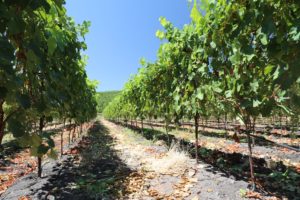
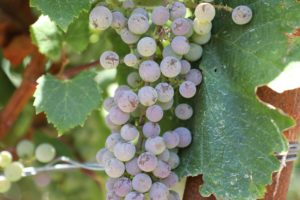
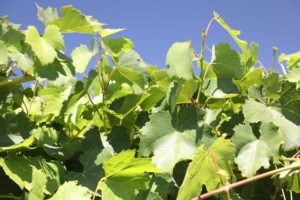
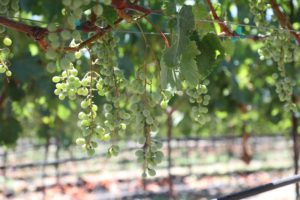
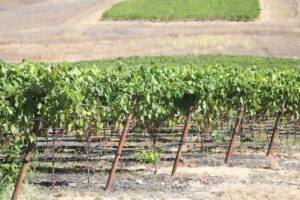

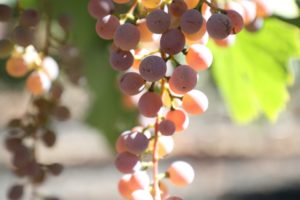

Leave a Reply